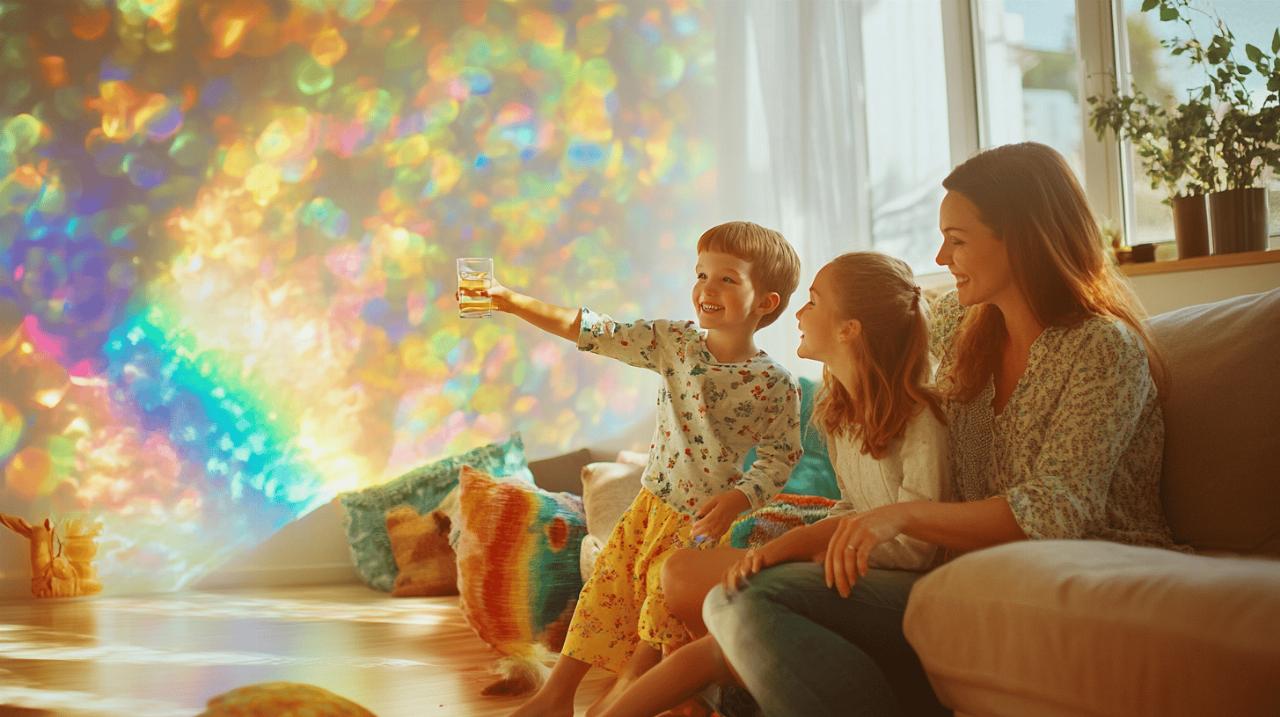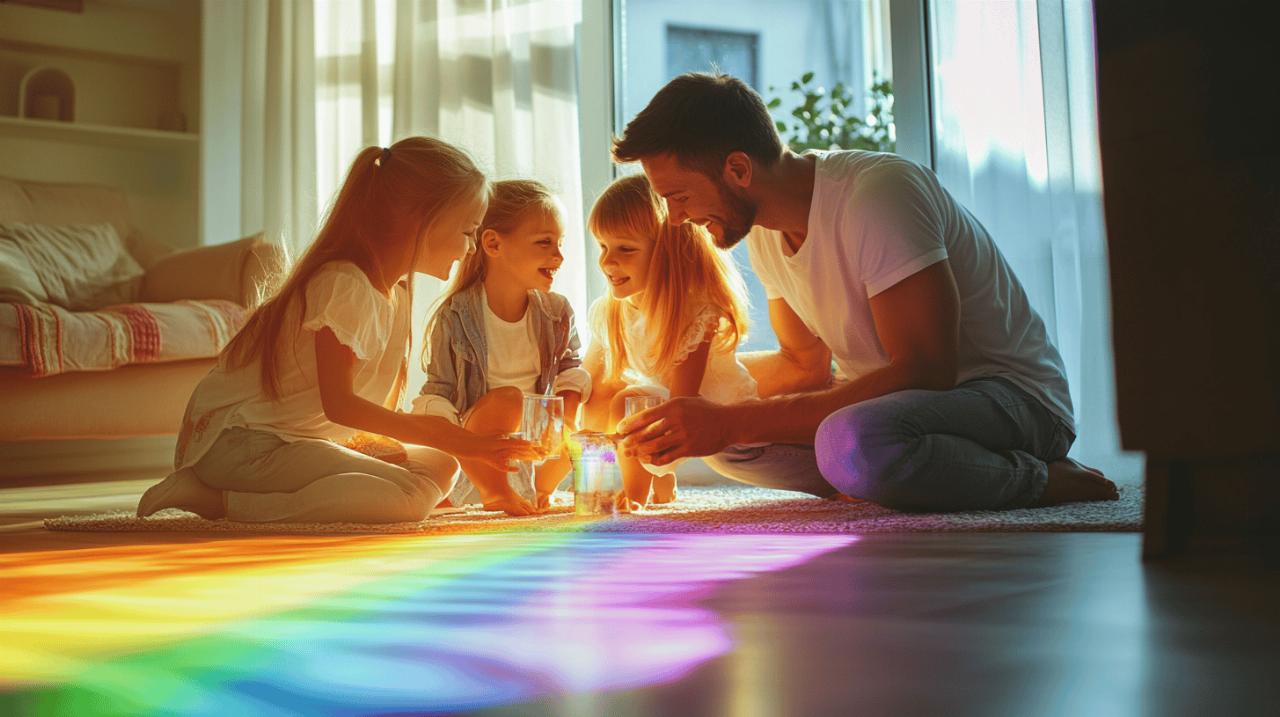Create a Rainbow at Home with This Easy and Fun Experiment: A Brilliant Indoor Science Activity for Children
There is something utterly magical about spotting a rainbow arching across the sky after a spot of drizzle, is there not? That brilliant spectrum of colour never fails to captivate both young and old alike. The good news is that you need not wait for the weather to cooperate to witness this natural wonder. With just a handful of everyday items you likely have lying about the house, you can recreate this mesmerising phenomenon right in your own sitting room. This delightful indoor science activity offers children a hands-on opportunity to explore the fascinating properties of light whilst having a thoroughly good time in the process.
Gathering your rainbow-making kit: simple household materials
Essential items you'll find round the house
Before embarking on your rainbow-making adventure, you will need to gather a few basic materials. The beauty of this experiment lies in its simplicity, as most households already possess everything required. First and foremost, you will need a clear glass filled nearly to the brim with water. This serves as the primary medium through which light will travel and transform. Next, locate a small mirror that can comfortably fit inside the glass at an angle. A handheld compact mirror or any small reflective surface will do the trick perfectly. You will also require a white plate or a piece of white cardboard to serve as your projection surface where the rainbow will ultimately appear. Finally, you need a reliable source of light, which could be natural sunlight streaming through a window on a bright day or a torch if the weather outside is particularly gloomy.
Optional extras to enhance your colourful display
Whilst the basic materials are sufficient to produce a lovely rainbow, a few optional additions can occasionally enhance the vibrancy of your display. Some families find that adding a tiny drop of washing up liquid to the water helps to create a slightly more defined spectrum, though this is by no means essential. Similarly, a minuscule amount of food colouring might add an extra dimension to the experiment, though it can sometimes obscure rather than enhance the effect. The key is to experiment and discover what works best in your particular setup. Children often enjoy the process of trial and error, adjusting various elements to see how the rainbow changes. This exploratory approach transforms a simple demonstration into a proper scientific investigation.
The rainbow creation process: a step-by-step walkthrough
Setting up your indoor light laboratory
Once you have assembled your materials, it is time to set up your indoor light laboratory. Choose a flat, stable surface near a window that receives plenty of natural light, or alternatively, select a spot where you can easily direct a torch beam. Place your white plate or cardboard on this surface, ensuring it is positioned where the reflected light can easily reach it. Fill your glass with water, leaving just a small gap at the top to prevent spillage. Carefully place the mirror into the glass, angling it so that it leans against one side. The angle is rather important here, as it determines how effectively the light will refract and reflect to create your rainbow. Children should be encouraged to handle the glass and mirror with care, making this an excellent opportunity to discuss safe handling of fragile items.
Adjusting Angles and Light for the Perfect Spectrum
Creating the perfect rainbow often requires a bit of fiddling about with angles and positioning. Direct your light source so that it shines onto the mirror submerged in the water. You may need to adjust the position of the glass, tilt the mirror slightly differently, or move your projection surface closer or further away. The rainbow will appear when the light passes through the water, strikes the mirror, and reflects onto your white surface. This process can take a few moments of adjustment, and children often find great satisfaction in being the ones to discover the optimal arrangement. The colours red, orange, yellow, green, blue, indigo, and violet should appear in sequence, creating that familiar ROYGBIV pattern. If the rainbow appears faint, try darkening the room slightly or adjusting the angle of the mirror once more. Patience and persistence are key, and the moment that brilliant spectrum finally appears makes all the effort worthwhile.
Understanding the science behind your rainbow: light refraction explained
How white light splits into brilliant colours
 The rainbow you have created is not merely a pretty display but a demonstration of fundamental physics at work. White light, whether from the sun or a torch, is actually composed of all the colours of the rainbow combined together. When this light encounters water, something rather remarkable occurs. The water causes the light to bend or refract, and because different colours of light bend at slightly different angles, they separate from one another. This separation is what creates the distinct bands of colour we recognise as a rainbow. Red light bends the least and appears on one edge of the spectrum, whilst violet bends the most and appears on the opposite edge. This same principle explains why we see rainbows in the sky after rain, as countless water droplets act as tiny prisms, each one splitting sunlight into its component colours.
The rainbow you have created is not merely a pretty display but a demonstration of fundamental physics at work. White light, whether from the sun or a torch, is actually composed of all the colours of the rainbow combined together. When this light encounters water, something rather remarkable occurs. The water causes the light to bend or refract, and because different colours of light bend at slightly different angles, they separate from one another. This separation is what creates the distinct bands of colour we recognise as a rainbow. Red light bends the least and appears on one edge of the spectrum, whilst violet bends the most and appears on the opposite edge. This same principle explains why we see rainbows in the sky after rain, as countless water droplets act as tiny prisms, each one splitting sunlight into its component colours.
The Role of Water and Mirrors in Creating Your Rainbow
In your homemade rainbow experiment, the water serves as the refracting medium, bending the light as it enters and exits the liquid. The mirror plays an equally important role by redirecting this separated light towards your projection surface, making the colours visible and allowing you to observe them clearly. Without the mirror, the refracted light would simply pass through the water and scatter in various directions, making it difficult to see the rainbow effect. Interestingly, Earth is the only planet known to have water rainbows, making this phenomenon rather special indeed. During winter months, rainbows are spotted less frequently because water droplets often freeze into snowflakes, which do not refract light in quite the same manner. The longest observed rainbow lasted an astonishing eight hours and fifty-eight minutes in Taiwan in 2017, demonstrating just how persistent these natural displays can be under the right conditions.
Extending the Rainbow Experience: Creative Activities and Safety Tips
Fun follow-up activities for curious young scientists
Once your children have successfully created their rainbow, the learning need not stop there. You might organise a rainbow hunt around the house, challenging them to find objects in each of the seven rainbow colours. This activity reinforces colour recognition whilst encouraging observation skills. Alternatively, use the rainbow as inspiration for an art project, inviting children to paint or draw their own interpretations of what they have witnessed. For those particularly keen on science, you might explore how different liquids refract light by repeating the experiment with various household liquids such as vegetable oil or sugar water. Some families enjoy subscribing to science boxes designed specifically for children, such as those offered by organisations like Little Passports, which provide age-appropriate experiments for youngsters aged five to eight years and older children as well. These subscription boxes can extend the scientific exploration beyond a single afternoon and nurture a lasting curiosity about the natural world.
Keeping your little ones safe during the experiment
Whilst this rainbow experiment is relatively straightforward and safe, adult supervision remains essential throughout. Working with water and glass always carries some risk, particularly with younger children who may be less aware of potential hazards. Ensure the workspace is free from trip hazards and that the glass is placed on a stable surface where it cannot easily be knocked over. Encourage children to handle all materials gently and with respect, turning this into a valuable lesson about careful manipulation of fragile objects. Should any water spill, clean it up immediately to prevent slipping. By maintaining a safe and controlled environment, you allow children to focus on the wonder of the experiment itself rather than worrying about potential accidents. This combination of safety awareness and scientific curiosity creates the ideal conditions for memorable learning experiences that children will carry with them long after the rainbow has faded from view.
